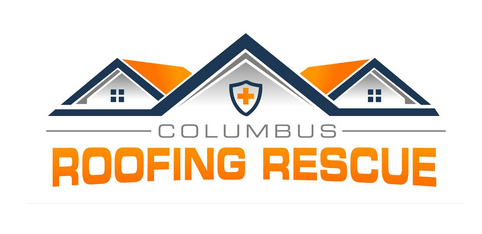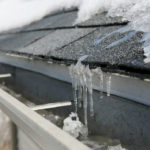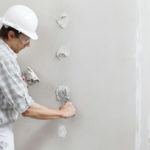
What is ice and water shield on a roof?
Is your roof prepared to withstand the harsh elements? One crucial component you should consider is an ice and water shield. This protective barrier can make all the difference when it comes to preventing leaks and water damage. Imagine a winter storm hits, and snow starts accumulating on your roof. As the snow melts, water can seep beneath the shingles, causing leaks and structural damage to your home. This is where an ice and water shield comes in. This layer of protection, typically installed on the eaves and valleys of the roof, prevents water infiltration, even during the most intense weather conditions.
An ice and water shield is a second line of defense for your roof, providing an additional barrier against moisture. It creates a watertight seal around nails and other roof penetrations, ensuring no water can penetrate and cause damage.
To ensure the longevity and durability of your roof, it’s essential to understand the importance of an ice and water shield. Investing in this protective layer can safeguard your home from the damaging effects of water and ice, giving you peace of mind during even the harshest weather conditions.
How Ice and Water Shield Works
An ice and water shield is a self-adhering membrane that is typically made of modified bitumen or rubberized asphalt. It is installed directly on the roof deck, underneath the roofing material such as shingles or tiles. This layer acts as a waterproof barrier, preventing any water that penetrates the roof’s outer layer from reaching the underlying structure.
The key feature of an ice and water shield is its ability to self-seal around nails and other roof penetrations. The membrane is sticky on both sides, allowing it to adhere to the roof deck and any objects penetrating the surface. This creates a watertight seal that prevents water from seeping through and causing damage.
Another critical aspect of an ice and water shield is its resistance to extreme temperatures. It is designed to withstand freezing temperatures without becoming brittle or losing its effectiveness. This ensures the membrane remains intact and protects even in the coldest climates.
In addition to its waterproofing properties, an ice and water shield also acts as a barrier against ice dams. Ice dams occur when snow on the roof melts and refreezes at the eaves, forming a barrier that prevents water from draining off the roof. The ice and water shield prevents water from entering the roof, reducing the risk of leaks and structural damage caused by ice dams.
Installing an ice and water shield is a critical step in the roofing process, as it provides an extra layer of protection against water infiltration. By understanding how it works, you can appreciate the importance of this essential component in safeguarding your roof.
The Importance of Ice and Water Shield in Protecting Your Roof

The roof is one of the most vulnerable areas of a home regarding water damage. Heavy rain, snow, and ice can all pose a significant threat to the integrity of your roof. Without proper protection, water can seep through the roof, causing leaks, rot, and structural damage.
This is where an ice and water shield comes into play. By installing this protective layer, you can significantly reduce the risk of water infiltration and the subsequent damage it can cause. An ice and water shield is a barrier against water, ensuring it cannot penetrate the roof and reach the underlying structure.
One of the main areas where an ice and water shield is installed is the roof’s eaves. The eaves are particularly susceptible to ice dam formation, as they are the first areas where snow accumulates and melts. Without proper protection, the melting snow can seep into the roof, causing leaks and damage to the interior of your home.
Installing an ice and water shield along the eaves creates a watertight seal that prevents water from entering the roof. This protects your home from leaks and helps maintain the structural integrity of the roof. By preventing water damage, you can avoid costly repairs and prolong the lifespan of your roof.
Another area where an ice and water shield is essential is the roof’s valleys. Valleys are where two roof planes meet, creating a channel for water to flow down the roof. Without proper protection, water can accumulate in the valleys, leading to leaks and damage to the roof structure.
By installing an ice and water shield in the valleys, you create a waterproof barrier that prevents water from infiltrating the roof. This ensures that water flows off the roof without causing any damage. Additionally, the ice and water shield protects the valleys from the wear and tear caused by snow and ice, helping to maintain their integrity over time.
Overall, the importance of an ice and water shield in protecting your roof cannot be overstated. It acts as a second line of defense against water infiltration, ensuring the longevity and durability of your roof. Investing in this essential component can safeguard your home from the damaging effects of water and ice, giving you peace of mind during even the harshest weather conditions.
Installing Ice and Water Shield on Your Roof
Now that you understand the importance of an ice and water shield, it’s time to consider the installation process. While installing an ice and water shield yourself is possible, hiring a professional for this task is recommended. A professional roofer has the experience and expertise to ensure that the installation is done correctly, maximizing the effectiveness of the shield.
The roof deck needs to be prepared before installing the ice and water shield. This involves removing existing roofing material, such as shingles or tiles, and inspecting the deck for damage or rot. Any necessary repairs should be made before proceeding with the installation.
Once the roof deck is prepared, the ice and water shield can be installed. The membrane is typically rolled out in sections, starting from the eaves and moving toward the ridge. It is important to overlap the sections to create a continuous barrier preventing water from seeping.
The ice and water shield should be installed in all the critical areas of the roof, including the eaves, valleys, and around any roof penetrations, such as chimneys or vents. It is important to follow the manufacturer’s instructions regarding the installation process to ensure that the shield is applied correctly.
After the shield is installed, the roofing material can be placed on top. This can include shingles, tiles, or any other roofing material. The ice and water shield acts as an additional layer of protection, preventing water from reaching the roof deck and causing damage.
Overall, installing an ice and water shield is a crucial step in protecting your roof from water damage. By hiring a professional to install the shield, you can ensure that it is applied correctly and provides maximum protection for your home.
Choosing the Right Type of Ice and Water Shield
When it comes to choosing the right type of ice and water shield for your roof, there are a few factors to consider. The two main ice and water shield types are modified bitumen and rubberized asphalt. Each type has its advantages and considerations, so it’s important to understand the differences before deciding.
Modified bitumen ice and water shields are made from asphalt and rubber polymers. They are known for their durability and flexibility, making them an excellent choice for climates with extreme temperatures. Modified bitumen shields are resistant to cracking and tearing, ensuring long-lasting protection for your roof.
Rubberized asphalt ice and water shields are made from a blend of asphalt and synthetic rubber. They are highly flexible and can conform to the roof’s contours, creating a watertight seal. Rubberized asphalt shields are known for their excellent adhesion properties, ensuring they stay in place even in high winds.
When choosing the right type of ice and water shield, it’s essential to consider the climate and weather conditions in your area. A modified bitumen shield may be the best choice if you live in a region with extreme temperatures. On the other hand, if you live in an area with high winds or heavy rainfall, a rubberized asphalt shield may be more suitable.
Additionally, it’s essential to consider the warranty offered by the manufacturer. A longer warranty period typically indicates that the manufacturer has confidence in the durability and effectiveness of their product.
Choosing a shield with a generous warranty gives you peace of mind knowing that your roof is protected for years to come.
Choosing the correct type of ice and water shield protects your roof from water damage. By considering the climate and weather conditions in your area, as well as the durability and warranty of the product, you can make an informed decision that will provide long-lasting protection for your home.
Hiring a Professional to Install Ice and Water Shield
While installing an ice and water shield yourself may be tempting to save money, hiring a professional for this task is highly recommended. Installing an ice and water shield requires experience and expertise to ensure that it is done correctly and provides maximum protection for your roof.
A professional roofer has the knowledge and skills to assess your roof and determine the best areas to install the shield. They will also be familiar with the local building codes and regulations, ensuring that the installation meets the requirements.
Additionally, a professional roofer will have access to the necessary tools and equipment to install the ice and water shield safely and efficiently. They will also have the experience to handle any unforeseen challenges or complications that may arise during the installation process.
By hiring a professional, you can have peace of mind knowing that the ice and water shield installation is done correctly. This will provide maximum protection for your roof and help avoid any potential issues or damage that may occur with a DIY installation.
When selecting a professional roofer, it’s important to research and choose a reputable and experienced contractor. Ask for recommendations from friends, family, or neighbors who have recently had their roof replaced or repaired. Additionally, check online reviews and ratings to get an idea of the contractor’s reputation and quality of work.
Once you have selected a few potential contractors, schedule consultations to discuss your specific needs and requirements, ask for a detailed estimate that includes the cost of materials, labor, and any additional services or repairs that may be necessary. This will help you make an informed decision and choose the contractor that best fits your budget and requirements.
By hiring a professional to install the ice and water shield, you can ensure that your roof is adequately protected from water damage. A professional installation will provide peace of mind knowing that your home is safeguarded against the elements, giving you a worry-free living experience.
Conclusion: Protecting Your Roof with Ice and Water Shield

Protecting your roof from the elements is crucial for the overall integrity and longevity of your home. An ice and water shield plays a significant role in preventing water infiltration and the subsequent damage it can cause.
Understanding how an ice and water shield works, you can appreciate its importance in safeguarding your roof. It acts as a second line of defense, creating a watertight seal that prevents water from seeping through and causing leaks and structural damage.
When considering the installation of an ice and water shield, hiring a professional for this task is recommended. A professional roofer has the experience and expertise to ensure that the shield is installed correctly, maximizing its effectiveness.
When choosing the right type of ice and water shield, consider your area’s climate and weather conditions. Modified bitumen and rubberized asphalt are the two main options, each with its own advantages and considerations. By selecting the right type for your specific needs, you can ensure maximum protection for your roof.
Overall, investing in an ice and water shield is a wise decision to protect your roof from the damaging effects of water and ice. By taking the necessary steps to safeguard your home, you can enjoy a worry-free living experience and prolong the lifespan of your roof. Don’t overlook the significance of an ice and water shield for your roof – it’s essential for protecting your home from the elements.



